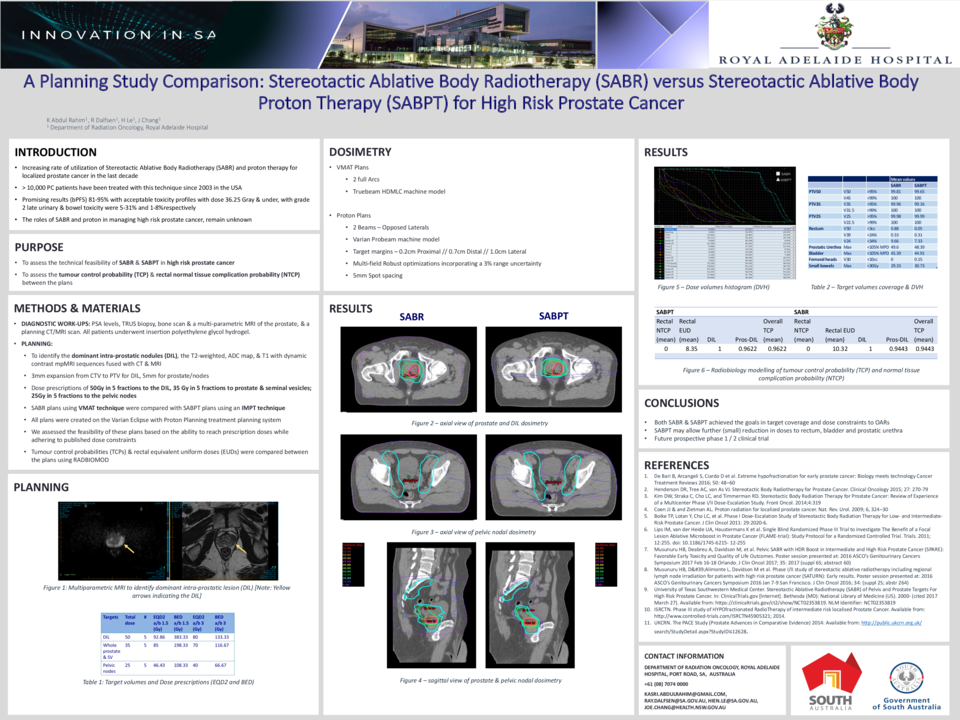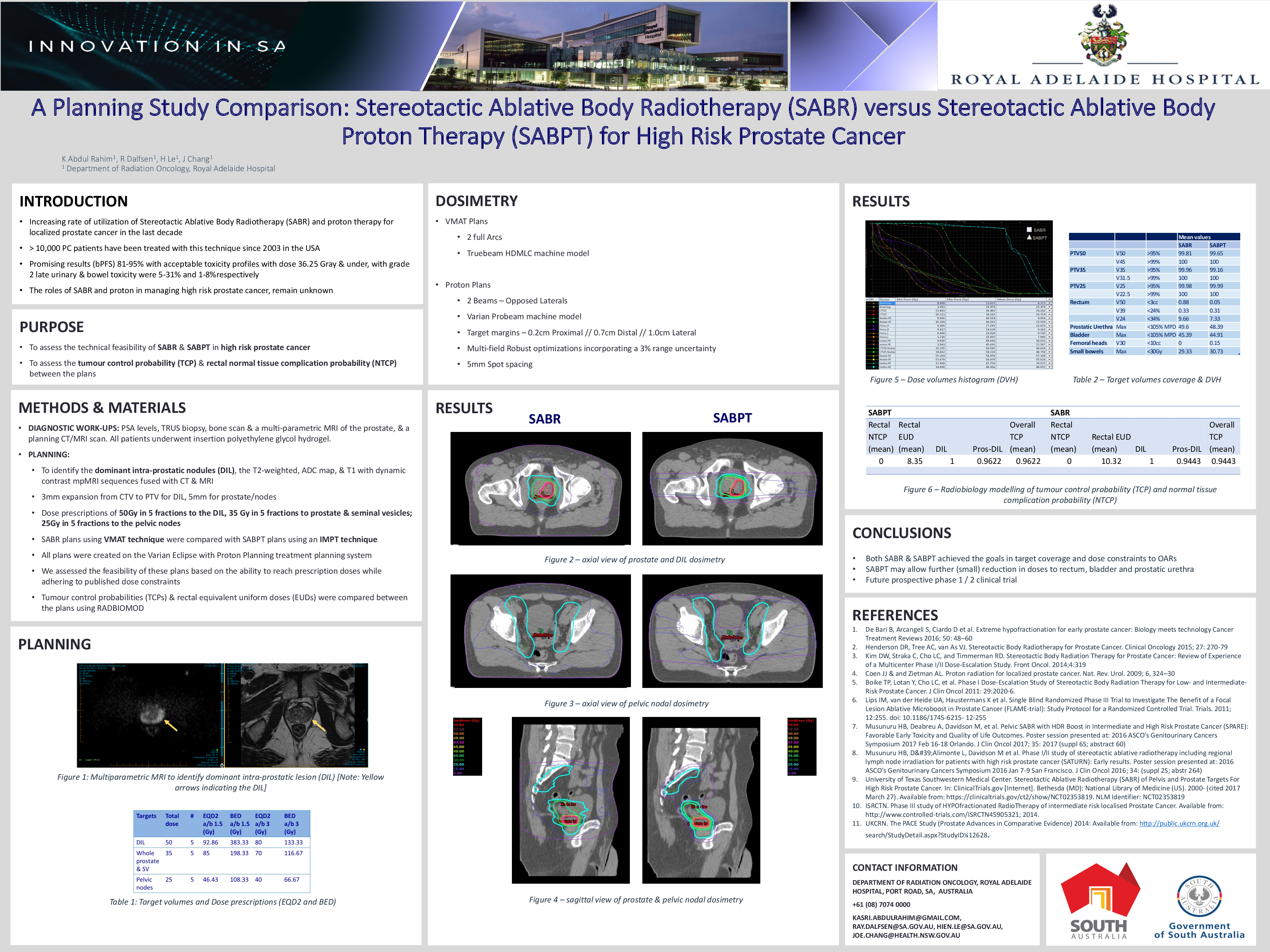Abstract
Objectives: 1- To assess the technical feasibility of stereotactic ablative body radiotherapy (SABR) and stereotactic ablative body proton therapy (SABPT) in high risk prostate cancer. 2- To assess the tumour control probability (TCP) and rectal normal tissue complication probability (NTCP) between the plans.
Methods: A radiotherapy (RT) planning study was performed on seven patients with high risk prostate cancer who previously underwent external beam radiotherapy. All patients underwent serum prostate specific antigen (PSA) levels, a trans-rectal ultrasound guided (TRUS) biopsy, whole body bone scan and a multi-parametric MRI (mpMRI) of the prostate, and a planning CT scan. The T2-weighted, ADC map, and T1 with dynamic contrast mpMRI sequences were fused with the CT and MRI to identify the dominant intra-prostatic nodules (DIL). The prescribed doses were 35 Gy in 5 fractions to the prostate and seminal vesicles; and 50Gy in 5 fractions to the DIL. SABR plans using a volumetric modulated arc therapy (VMAT) technique were compared with SABPT plans using an intensity modulated proton therapy (IMPT) technique. All RT plans were created on the Phillips Pinnacle with Proton Planning treatment planning system. We assessed the feasibility of these plans based on the ability to reach prescription doses while adhering to published dose constraints. Tumor control probabilities (TCPs) and rectal equivalent uniform doses (EUDs) were compared between the plans using RADBIOMOD. The preliminary results of two patients were included in this abstract.
Results: All plans for two patients reached prescription doses and adhered to the normal tissue constraints. The mean TCPs for SABR and SABPT were 95% and 97%, respectively. The mean rectal EUDs for SABR and SABPT were 10.3 Gy and 8.4 Gy, respectively.
Conclusions: This planning study has suggested that a dose escalation for high risk prostate cancer is feasible, either by using SABR or SABPT. The TCPs were similar, whilst the rectal EUD was slightly lower with SABPT.





